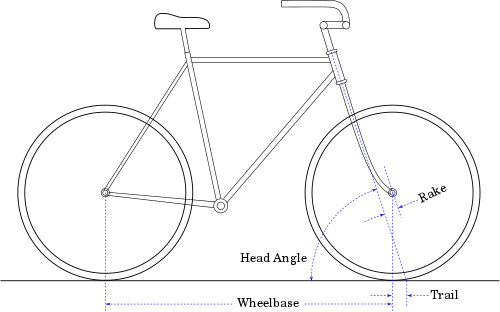I'm quite familiar with BMW steering performance and specifications because of analysis, testing, measurements of components and conversations with it's Development engineers (More so on the E46 5 Series version, though. The principle components of BMW steering performance are the OEM tires and the ZF provided steering system (pump, lines controller, valve and gear. Given the unique characteristics of a BMW Star labeled tire, the front suspension geometry is specified to fill in the connection between the desired tierod loads and load gradients and the desired steering wheel rim forces. Its is NOT done as the arbitrary lore from some 'designer'.
Because the front tire pair's forces peak out after the peak aligning moments, caster is added as necessary to align the peak sideforce with the peak aligning mements. (Nothing unique here, this is usually how all performance cars are arranged). The other gain from caster has to do with what caster effectively produces: Camber change by steer. This is only a low to moderate speed effect though, because high steer angles (and resulting camber changes) at high speed are not viewed with great favor. The downside to caster is an increase in tierod loads from the lateral forces. An undesireable understeer increase results from this. And, its the worst form of understeer change: The nonlinear steering gain change effects from loading the downstream steering system (valve and T-bar), and the upstream components (intermediate shaft isolator, U-joints and spline). To cut back on this effect, reduce plunging of tires while steering (you want to steer the tire, not plunge it sideways), the caster offset (hub lead) is factored in. If a front drive shaft is to be an option, the reduced plunging is an added benefit to the resulting steering feel). This sounds a lot like steady state blather, but the real advantage to the BMW package has to do with the harmonization of the tire transient properies. In order for the Mz transient and the Fy transient to synchronize themselves as the steered tires roll out the input, these forces and moments must be transferred to the tierods in a proper manner. If you look at a plot of normalized (by the steady state values) Fy and Mz as a function of distance traveled, the optimum 'feel' is produced when the two function are coincidental as they approach steady state. Obviously the Mz function has a large impulse at 0+ distance, while Fy has a low or no value. Then Mz drops down to a much lower value. The phasing of these tire functions, combined with the preservation of their coherence with headlevel lateral acceleration is the reason these cars are the most fun to drive. The 5 Series BMW tires are very unique in this respect, with BMW wannabees having close but no cigar properties in their tires. Yes the rim width is a strong player in this response. Some of you may call this phenomenon 'riding on rails'. It actually has some similarity to a wheel flange constraint.
Surprizingly enough, the best way to become a believer of this is to put tires of the same size, brand, and pressure from a domestic BMW wanna-be on a car and gauge your ability as an evaluator. If you can't feel the difference, then you might consider buying and driving a road grader instead of a Bimmer. You are a 'displacement control' type driver, not a 'feel' (moment control type) driver.




![[smile] [smile] [smile]](/data/assets/smilies/smile.gif)





